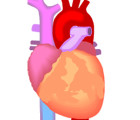Inferior Myocardial Infarction Complications When reviewing a case involving chest pain and a resultant diagnosis of Acute Myocardial Infarction an attorney should pay particular attention to the type/area of myocardial infarction the patient sustained. An acute Inferior Myocardial Infarction has certain characteristics that set it apart from other infarcts. While the Inferior Myocardial Infarction itself, […]
Category archives for Acute Myocardial Infarction
Importance of ST-Segment Monitoring Post- Acute Myocardial Infarction When reviewing a chest pain case that has resulted in a diagnosis of Acute Myocardial Infarction it is important to ascertain if the patients ST-segment was monitored post intervention. The following are the indications for ST-Segment monitoring post-Acute Myocardial Infarction: Evaluating post-MI ischemia Evaluating reocclusion after angioplasty […]
1. Joint Commission Core Measures for Acute Myocardial Infarction PTCA (percutaneous transluminal coronary angioplasty) with 90 minutes. Fibrinolytic Therapy Received within 30 Minutes of Hospital Arrival. Aspirin given on arrival to facility and prescribed at discharge. ACE inhibitor (Lisinopril, Vasotec, and Captopril are examples) prescribed if EF (ejection fraction) <40%. Beta blocker (Metoprolol and Coreg […]
The discussion in this blog post will continue the discussion of Anatomy of a Chest Pain Case: What Attorneys Must Know to Navigate the Medicine, addressing the different types of Myocardial Infarction, diagnostic testing, and treatment. Please refer to the previous blog post regarding this topic for an introduction to the topic. When a patient […]
The estimated annual incidence of acute myocardial infarction in the United States is 600,000 new cases and 320,000 recurrent attacks. The diagnosis of Acute Myocardial Infarction is made on the basis of a high clinical suspicion based on the history and physical examination findings in addition to changes in cardiac biomarkers and EKG changes. Treatment […]
The next few blog posts are going to address the Joint Commission Core Measures for various Core Measure Sets as related to specific medical conditions. Whenever I am reviewing medical records for a malpractice case I utilize templates I have devised if possible. These templates include a list of specifics concerning the cases particular medical […]
A percutaneous coronary intervention (PCI) is often called balloon angioplasty. A catheter is inserted into the blood vessels either in the groin (femoral artery) or in the arm (radial artery). Using a special type of X-ray called fluoroscopy; the catheter is threaded through the blood vessels into the heart where the coronary artery is narrowed. […]
Patients that have had a myocardial infarction should have continuous ST-segment monitoring post MI/cath. Following are the indications for ST-Segment monitoring post AMI. Evaluating post-MI ischemia Evaluating reocclusion after angioplasty or atherectomy. Evaluating reperfusion after thrombolytic therapy. The expected practice, as put forth by the AACN (American Association of Critical Care Nurses) is […]

The Joint Commissions Core Measures serve as a standardized assessment measure for care given in specific areas. Despite widespread dissemination of the core measures, safety goals, and related quality guidelines, there is significant variation in their application across hospitals. The reasons for this are varied but include differences in guideline familiarity, provider training, and tools […]